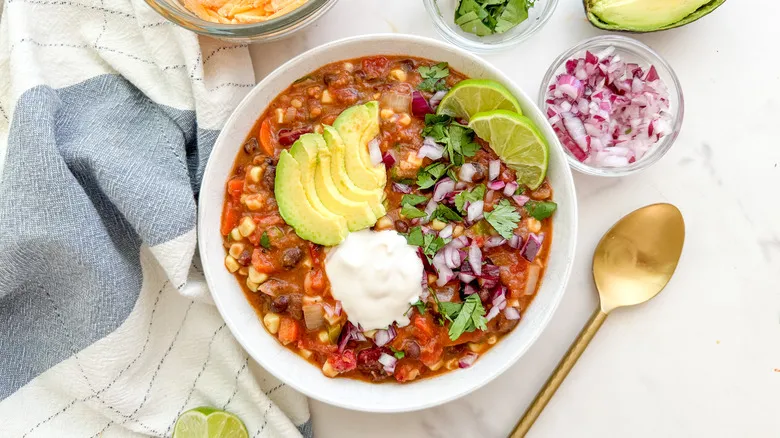Gather the ingredients for basic 3-bean vegetarian chili
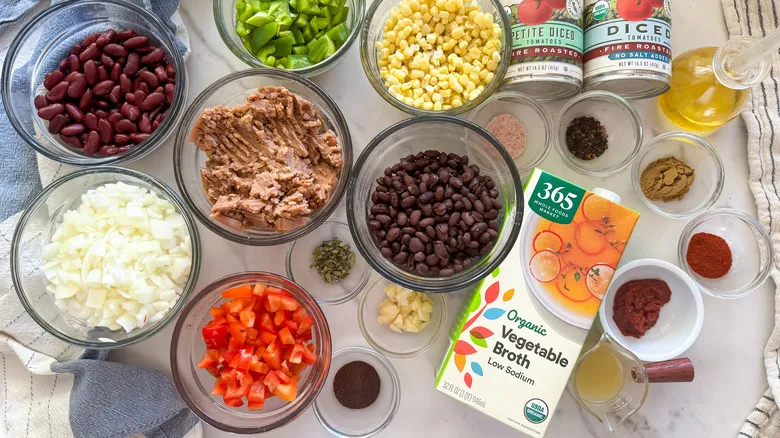
To prepare this recipe, begin in the produce section by selecting an onion, garlic, a red pepper, a poblano pepper, and two limes if you prefer not to use bottled lime juice. "If you can't find a poblano pepper, an Anaheim pepper is a suitable alternative. Both are mild yet provide an earthy flavor," notes Hahn.
Next, head to the dry goods aisle to pick up fire-roasted tomatoes, vegetable broth, tomato paste, black beans, kidney beans, refried beans, and either canned or frozen corn.
Finally, check your pantry for avocado oil, cumin, ancho chili powder, chipotle chili powder, smoked paprika, Mexican oregano, and salt.
Step 1: Add oil to a pot

Pour the oil into a large pot and set the heat to medium-high.
Step 2: Add the vegetables to the pot
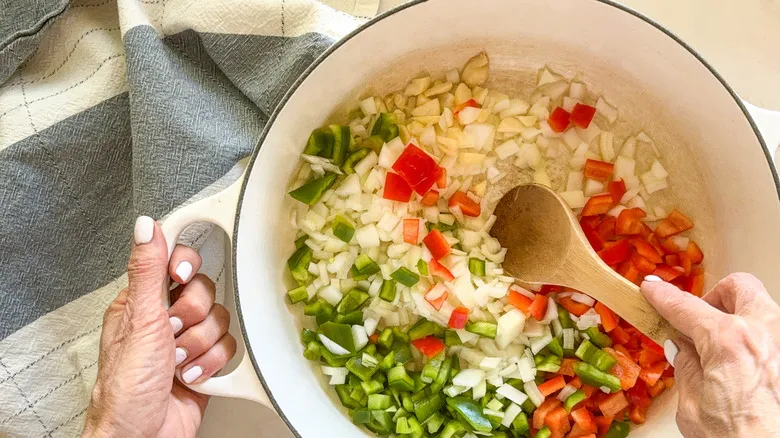
Add the onion, garlic, red pepper, and poblano pepper. Sauté for 8-10 minutes or until they become tender, stirring often.
Step 3: Add more ingredients
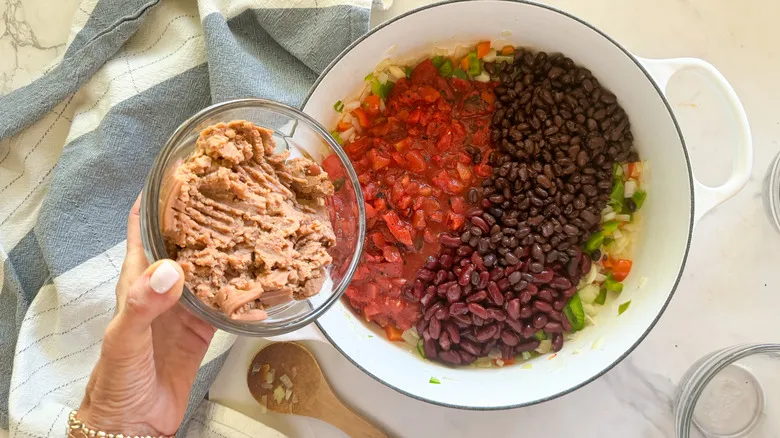
Incorporate the fire-roasted tomatoes, broth, black beans, kidney beans, refried beans, cumin, ancho chili powder, chipotle chili powder, smoked paprika, oregano, and salt. Mix well.
Step 4: Bring to a boil, then simmer
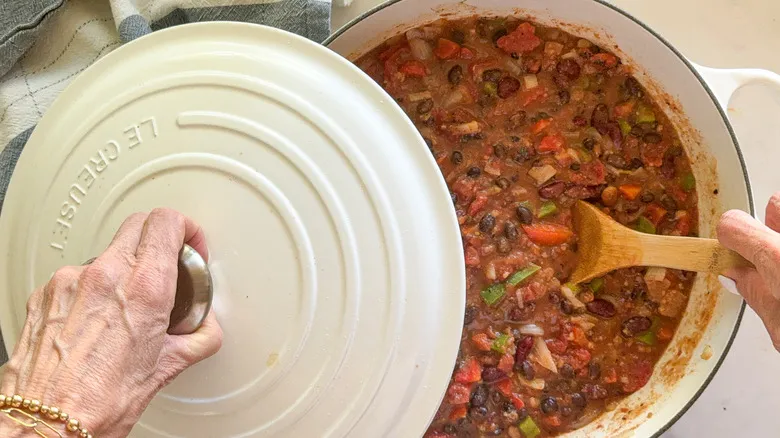
Heat until boiling, then reduce the heat to a simmer, cover, and cook for 30 minutes.
Step 5: Add the final ingredients
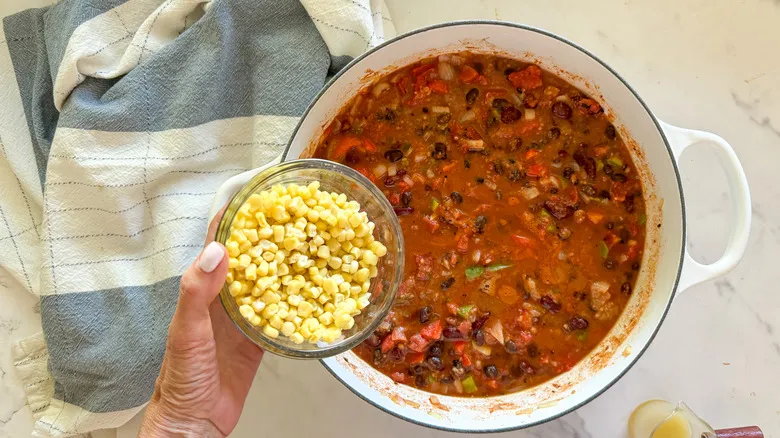
Incorporate the corn and lime juice, then mix well. (If you're using frozen corn, cook it on low for 3 minutes until it thaws.)
Step 6: Serve the chili

Include optional toppings and present.
How can I customize the basic 3-bean vegetarian chili?
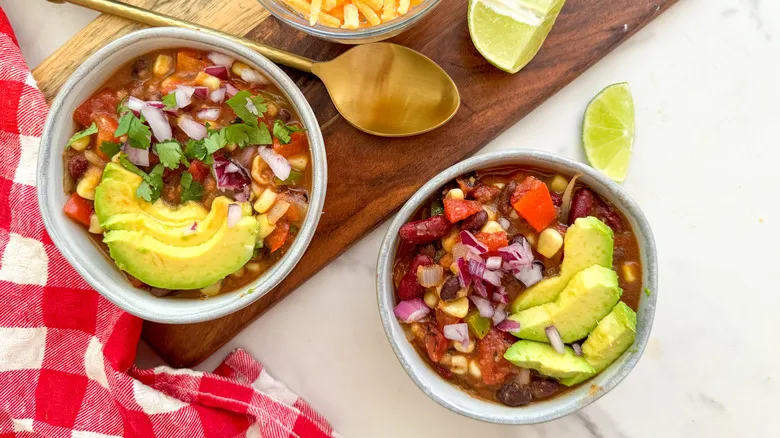
Our fundamental 3-bean chili features kidney beans, black beans, and refried beans, but feel free to try other bean types such as white beans, chickpeas, or cannellini beans. The refried beans contribute to the chili's thickness; however, if you prefer a lighter version, you can either leave them out or substitute them with another type of bean.
Incorporating a variety of vegetables into the chili is an excellent way to utilize any leftover produce in your fridge, while also boosting flavor and nutrition. Think about adding different colored peppers, zucchini, carrots, sweet potatoes, or butternut squash. "Zucchini and carrots can be easily included during the sautéing phase, and if you're interested in sweet potatoes and squash, roast them on a baking sheet at 400°F for about 30 minutes, then mix them into the chili before serving for a delicious caramelized flavor," Hahn suggests.
Enhance the protein content by including quinoa or lentils. Both options provide texture and heartiness to the chili. You can add uncooked quinoa or lentils during the simmering phase and allow them to cook for approximately 20-30 minutes. Just be sure to add extra liquid to accommodate these ingredients.
What can I serve with the basic 3-bean vegetarian chili?
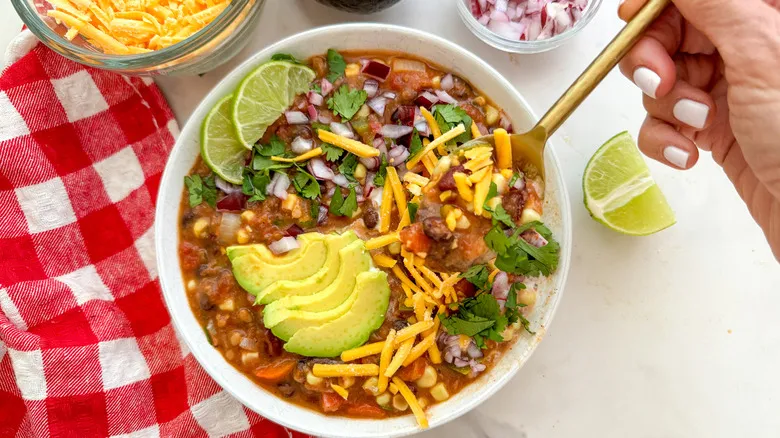
The 3-bean chili stands well on its own as a complete meal, but there are plenty of side dishes that can enhance the experience. A timeless option, cornbread, pairs beautifully with the chili's flavors while adding a hint of sweetness. You can choose classic cornbread or try a twist with jalapeño or cheddar variations.
For a hearty accompaniment, serve the chili over steamed white or brown rice, or prepare a flavorful batch of Spanish rice to enjoy alongside. If you're wrapping the chili in large tortillas burrito-style, adding rice inside will be a delightful touch.
To introduce a satisfying crunch, consider serving the chili with tortilla chips or strips. You can even make your own by baking them and seasoning with spices like chili powder or cumin. "One of my favorite ways to serve chili is by creating a toppings bar. It’s enjoyable to offer options like cheese, sour cream, red onion, jalapeños, and tortilla strips, allowing everyone to customize their chili to their liking," Hahn suggests.
Recommended
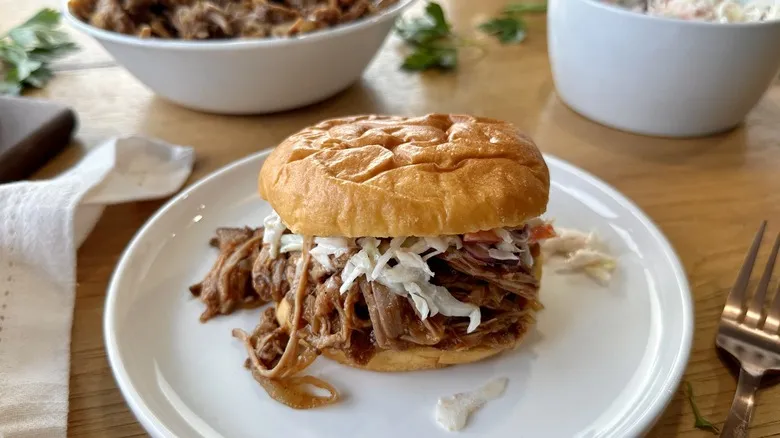
Easy Slow Cooker Pulled Pork Recipe
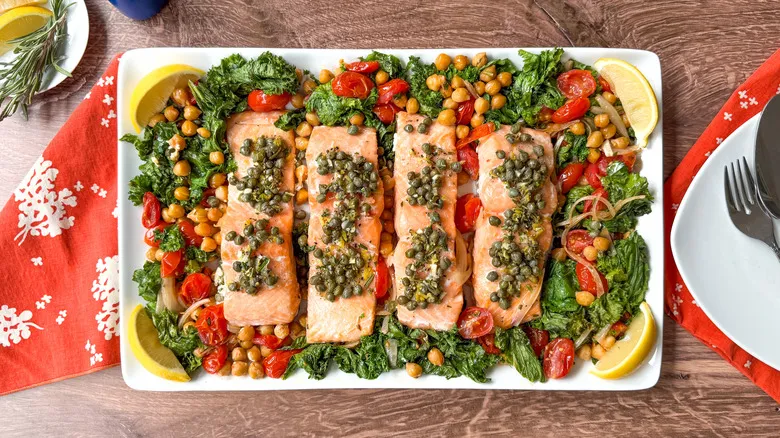
1-Pan Baked Salmon With Mustard Greens And Chickpeas Recipe
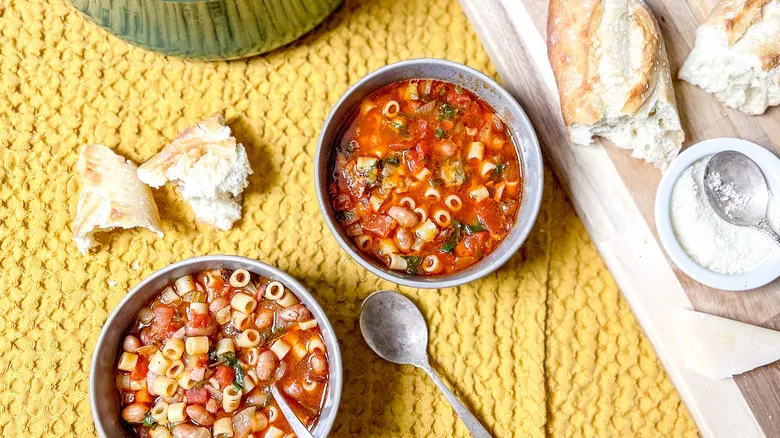
Classic Pasta E Fagioli (With Chard) Recipe

Parmesan-Crusted Salmon With Creamy Herb Sauce Recipe
Next up

